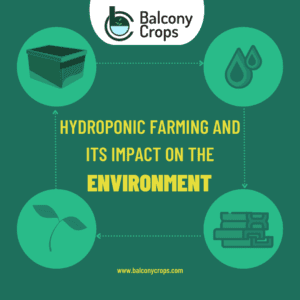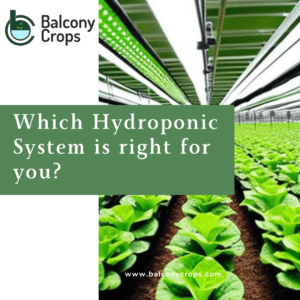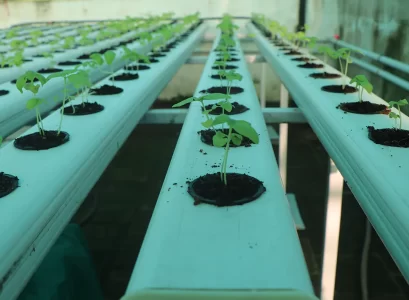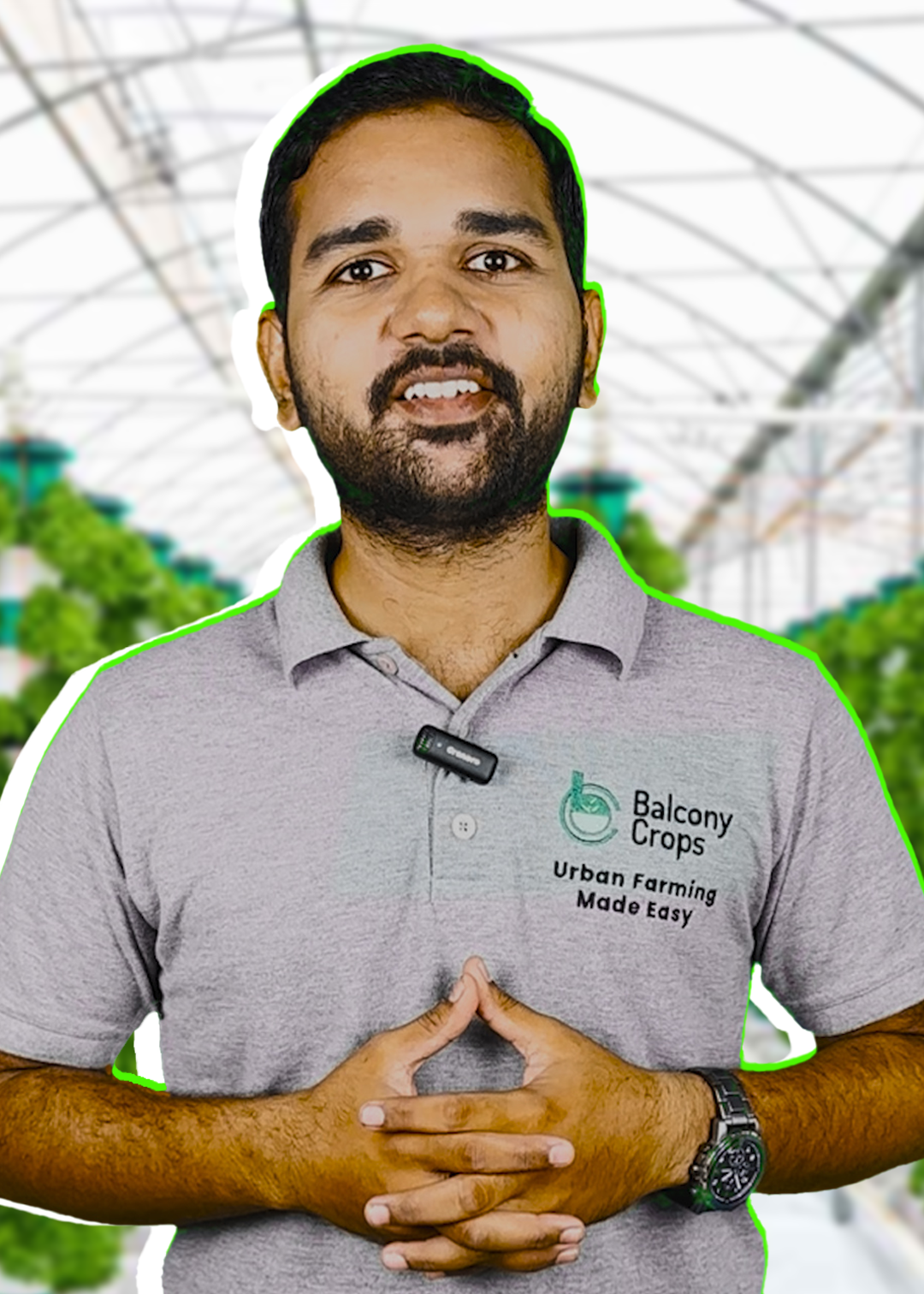Table of Contents
Introduction:
As the world’s population continues to grow, there is an increasing demand for food production. However, traditional farming methods can be costly, time-consuming, and damaging to the environment. Hydroponics is an innovative technique that offers a sustainable solution to these challenges. In this article, we will explore what is hydroponics, its advantages, and how it is changing the face of agriculture.
Definition of Hydroponics:
Hydroponics is a method of growing plants without soil. Instead, plants are grown in a nutrient-rich water solution that is carefully balanced to provide all the essential elements required for plant growth. Hydroponics systems can vary in size and complexity, from small home setups to large commercial operations.
Commercial Hydroponics:
Commercial hydroponics is a highly productive method of hydroponic farming that is gaining popularity due to its efficiency and profitability. In commercial hydroponic farming, plants are grown in a controlled environment using a soilless medium, and also allowing for precise management of factors such as water, light, nutrient and temperature. This method of farming requires less space than traditional farming and has a faster growth rate, resulting in higher yields and reduced production costs. With increasing demand for fresh produce, commercial hydroponic farming presents a lucrative opportunity for entrepreneurs looking to enter the agriculture industry.
Advantages of Growing Plants Hydroponically:

There are several advantages to growing plants hydroponically:
Faster Growth:
Plants grown hydroponically tend to grow faster than those grown in soil. This is because they have constant access to nutrients, which allows them to focus their energy on growth rather than searching for nutrients.
Increased Yields:
Hydroponic systems can produce higher yields than traditional farming methods. This is because the growing conditions can be carefully controlled, ensuring that plants receive the optimum amount of nutrients and light.
Water Conservation:
Hydroponics uses significantly less water than traditional farming methods. This is because water can be recirculated within the system, reducing the amount of water needed to grow plants.
Healthy Plants:
Hydroponic systems provide plants with a clean, disease-free environment to grow in. This reduces the need for pesticides and other harmful chemicals, resulting in healthier plants and a safer end product for consumption.
Choosing the Right Hydroponic System:
Hydroponics is a highly customizable growing method, and there are several types of hydroponic systems to choose from. Each system has its advantages and disadvantages, so it is essential to consider several factors before choosing the right system for your needs. Based on the system you can find the Hydroponic kits in chennai too.
Types of Hydroponic Systems:

Ebb and Flow System:
To provide stability, a medium like perlite is needed. The tray containing the plants is periodically pumped with water and nutrient solutions. The residual solution drains back to the reservoir after being absorbed by the plants. This straightforward approach is employed in backyard gardens. It is used to grow Basil, Lettuce and Parsley.
Nutrient Film Technique (NFT):
Plants are housed in sloped wooden/PVC channels. Pumps are used to move the nutrient solution to the channel’s high point, where water that has fallen is collected and used again. This technique is used to cultivate plants with less roots.
Drip Systems:
One of the most efficient systems to grow crops as the drip system keeps it simple for water & nutrient delivery. The growth of crops is improved by automatic flow of nutrient rich water at regular intervals. This system is considered efficient as it saves a lot of water, nutrients, and the automation helps in saving time.
Aquaponics:
Aquaponics is a combination of hydroponics and aquaculture, where fish waste is used as a nutrient source for plants. The plants, in turn, filter the water for the fish, creating a self-sustaining ecosystem.
Aeroponics:
This NFT-like technology is based on water and doesn’t need a medium. The nutrient solution is sprayed onto the plants as mists. Although challenging to set up, this is advantageous in a large business context.
Deep Water Culture (DWC):
The plant’s root is suspended in oxygenated, mineral-rich water in a container where an air pump is used to oxygenate the water. This process is simple and low in maintenance.
Factors to Consider When Choosing a Hydroponic System:
Space:
The amount of space you have available will impact which hydroponic system you choose. Some systems, such as DWC, are more compact and suitable for smaller spaces.
Budget:
Different hydroponic systems vary in cost, so it is essential to consider your budget when choosing a system.
Skill Level:
Some hydroponic systems, such as NFT and aeroponics, require more technical knowledge and skills to set up and maintain. Consider your experience level when choosing a system.
Crop Type:
Different crops have different requirements, so it is essential to consider which crops you want to grow when choosing a system.
Maintenance:
Different hydroponic systems require varying degrees of maintenance, so consider how much time and effort you are willing to put into maintaining your system.
Setting Up Your Hydroponic System:
Once you have chosen the right hydroponic system for your needs, it’s time to set it up. Here are the basic steps to follow:
Preparing the Materials and Tools:
Before you start, make sure you have all the necessary materials and tools. This will vary depending on the type of system you have chosen. Generally, you will need:
- A container or reservoir for the nutrient solution
- Growing media (such as hydroton or rockwool)
- Net pots or baskets
- A water pump and tubing
- Nutrient solution
- pH and EC meters
- Lighting system (for indoor cultivation only)
- Seeds or seedlings
Assembly Instructions:
- Start by filling the container or reservoir with the nutrient solution. Follow the manufacturer’s instructions for mixing the solution to the correct strength.
- Place the water pump in the bottom of the container and attach the pipe..
- If your system requires growing media, fill the net pots or baskets with the media and place them in the system.
- Insert your plants into the net pots or baskets and place them in the system.
- Connect the pipe to the pump and turn it on to circulate the nutrient solution.
- Set up your lighting system to provide the appropriate amount of light for your plants if grown in indoors.
Tips for Maintaining Your Hydroponic System:
- Monitor the pH and EC levels of your nutrient solution regularly and adjust them as necessary.
- Keep the water temperature between 65-75°F (18-24°C) to ensure optimal plant growth.
- Clean the system regularly to prevent the buildup of algae, bacteria, and other contaminants.
- Check the water level regularly and top up as necessary to prevent the pump from running dry.
Plant Selection and Preparation:
When choosing plants for hydroponics, it is important to select plants that are well-suited for this type of growing environment. Hydroponic plants should have a strong root system, be able to tolerate high levels of moisture, and have a high nutrient requirement. Some popular hydroponic crops include lettuce, herbs, tomatoes, peppers, and strawberries.
Once you have selected the plants that you want to grow, you will need to prepare seedlings for hydroponic growth. The first step is to start the seeds in a sterile growing medium, such as rockwool or coconut coir. Once the seeds have germinated, they can be transplanted into the hydroponic system.
Planting and Transplanting:
To plant seedlings in a hydroponic system, you will need to create a hole in the growing medium and gently place the seedling into the hole. Be sure to handle the seedling carefully to avoid damaging the roots.
As the seedlings grow, you will need to monitor the nutrient solution and adjust it as necessary to ensure that the plants receive the proper nutrients. You should also keep an eye on the pH level of the nutrient solution, as this can affect the plants’ ability to absorb nutrients.
When it comes time to transplant mature plants into the hydroponic system, it is important to handle the plants gently to avoid damaging the roots. You will need to remove the plant from its current growing medium, rinse the roots clean, and then place the plant into the hydroponic system.
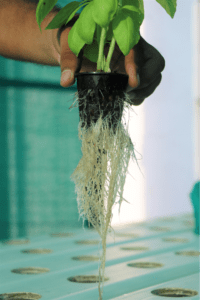
Overall, growing plants hydroponically can be a rewarding and efficient way to produce healthy, nutrient-rich crops. With the right plant selection and preparation, as well as careful attention to planting and transplanting techniques, you can create a thriving hydroponic garden.
Nutrient Solution:
The nutrient solution is a critical component of any hydroponic system. It provides the essential elements that plants need to grow, including nitrogen, phosphorus, and potassium.
Importance of Nutrient Solution:
Providing the correct balance of nutrients is essential to ensure healthy plant growth and high yields. A properly balanced nutrient solution can also help to prevent nutrient deficiencies, which can cause stunted growth and other problems.
Maintaining and Adjusting the Nutrient Solution:
It is essential to monitor the pH and EC levels of your nutrient solution regularly and adjust them as necessary. You can use pH up or pH down solutions to adjust the pH, and additional nutrient solutions to adjust the EC level. Be sure to follow the manufacturer’s instructions carefully when making adjustments to your nutrient solution.
If you don’t have experience using a nutrient solution, you can always check out Balconycrops Nutrient Solution for hydroponics
Maintenance and Troubleshooting your Hydroponics System:
Maintaining a healthy hydroponic garden requires ongoing monitoring and adjustment. You will need to regularly monitor and adjust the pH level of the nutrient solution to ensure that it remains within the optimal range for your plants. You should also monitor the water and nutrient levels in the system and adjust them as needed.
Common issues in hydroponic gardening include nutrient deficiencies, root rot, and pest infestations. If you notice any of these problems, you will need to take corrective action, such as adjusting the nutrient solution, treating the plants for pests, or replacing the growing medium.
Harvesting and Storage:
When your plants are ready for harvest, there are several signs to look for, including the maturity of the fruit or vegetable, the color of the plant, and the texture of the plant. Once you have determined that your plants are ready to harvest, you should use proper harvesting techniques to avoid damaging the plants.

After harvesting, it is important to store and preserve the plants properly to ensure that they remain fresh and flavorful. This can include techniques such as refrigeration, canning, or drying.
Conclusion
Hydroponic gardening is a highly effective and efficient way to grow healthy, nutrient-rich crops. By carefully selecting plants that are suitable for hydroponics, preparing seedlings properly, and maintaining a healthy growing environment, you can produce a thriving hydroponic garden.
Regular monitoring and adjustment, as well as proper harvesting and storage techniques, are key to maintaining a healthy and productive hydroponic garden. With the right knowledge and care, hydroponic gardening can be a rewarding and enjoyable way to grow your own food and herbs at home.




